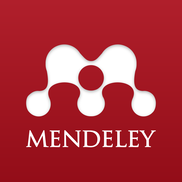Strategi Menurunkan Defisit Anggaran Tahun 2023 Dengan Pendekatan Analisis Proses Hierarki
Abstract
COVID-19 requires the Indonesian Government to implement financial policies for economic stability with the issuance of Law 2/2020 providing leeway for the government to project a budget deficit exceeding 3 percent of GDP from 2020-2022. This article wants to look at alternatives and government policy criteria to return the budget deficit to below 3 percent. The method uses the Analytic Hierarchy Process (AHP) with Expert Choice 11 software. Primary data is based on a purposive sampling method on 3 experts, namely APBN Analysts, Policy Economic Researchers and Financial Economic Observers as well as secondary data obtained from projections and realization of the 2020, 2021 and 2022 APBN. Central Statistics Agency and mainstream media with indicators, namely economic growth, exchange rate, inflation, oil prices and interest rates. The results of the AHP calculation sequentially from the high priority weights obtained the criteria for economic growth (0.325), interest rates (0.228), oil prices (0.203), inflation (0.139) and exchange rates (0.106). For alternatives, high priority weightings were obtained, namely tax revenue (0.238), trade balance (0.216), political stability (0.201), priority financing (0.179) and better spending (0.167). The role of the DPR RI is needed to supervise fiscal consolidation which is focused on three strategies, namely increasing revenue, better spending and financing
COVID-19 mengharuskan Pemerintah Indonesia melakukan kebijakan keuangan untuk stabilitas ekonomi dengan terbitnya Undang-Undang No 2 Tahun 2020 memberikan kelonggaran kepada pemerintah untuk memproyeksikan defisit anggaran melebihi 3 persen dari PDB dari tahun 2020-2022. Tulisan ini ingin melihat alternatif dan kriteria kebijakan pemerintah untuk mengembalikan defisit anggaran di bawah 3 persen. Metode menggunakan Analytic Hierarchy Process (AHP) dengan software Expert Choice 11. Data primer berdasarkan metode purposive sampling pada 3 pakar yaitu Analis APBN, Peneliti Ekonomi Kebijakan dan Pengamat Ekonomi Keuangan serta data sekunder diperoleh dari proyeksi dan realisasi APBN tahun 2020, 2021 dan 2022, Badan Pusat Statistik dan media mainstream dengan indikator yaitu pertumbuhan ekonomi, nilai tukar, inflasi, harga minyak dan suku bunga. Hasil perhitungan AHP secara berurutan dari bobot prioritas tinggi diperoleh kriteria pertumbuhan ekonomi (0,325), suku bunga (0,228), harga minyak (0,203), inflasi (0,139) dan nilai tukar (0,106). Untuk alternatif diperoleh pembobotan prioritas tinggi yaitu penerimaan pajak (0,238), neraca perdagangan (0,216), stabilitas politik (0,201), pembiayaan prioritas (0,179) dan spending better (0,167). Diperlukan peran DPR RI untuk mengawasi konsolidasi fiskal yang difokuskan pada tiga strategi, yaitu peningkatan penerimaan, spending better, dan pembiayaan.
Keywords
Full Text:
PDF (Bahasa Indonesia)References
Buku
Kitanov, Y. (2019). Are risk free government bonds risk free indeed. January.
Moleong, L. J. (2016). Metodologi Penelitian (35th ed.). PT Remaja Rosdakarya.
Sugiyono. (2017). Metode Penelitian Kebijakan (S. Y. Ratri (ed.); I). Alfabeta.
Wahyuningsih, T. (2020). Ekonomi Publik (2nd ed.). Rajawali Pers.
Jurnal & Working Paper
Anwar, K. (2014). Analisis Dampak Defisit Anggaran Terhadap Ekonomi Makro Indonesia (Tahun 1993-2007). Jejaring Administrasi Publik, VI, No 2(2), 588–603.
Arshad, Z., Zaid, M., & Latif, A. (2014). Relative Effectiveness of Foreign Debt and Foreign Aid on Economic Growth in Pakistan. Interdisciplinary Journal of Contemporary Research in Business, 55(2), 254–268.
Badan Pusat Statistik. (2020). Laporan Bulanan Data Sosial Ekonomi Agustus 2020 (123 Agustu). Badan Pusat Statistik.
Badan Pusat Statistik. (2021a). Ekonomi Indonesia 2020 Turun sebesar 2,07 Persen (c-to-c). Badan Pusat Statistik. https://www.bps.go.id/pressrelease/2021/02/05/1811/ekonomi-indonesia-2020-turun-sebesar-2-07-persen--c-to-c-.html
Badan Pusat Statistik. (2021b). Inflasi Perkembangan Indeks Harga Konsumen. In Bps.go.Id (Vol. 19, Issue 27).
Bagheri, M., Zaiton Ibrahim, Z., Mansor, S., Abd Manaf, L., Akhir, M. F., Talaat, W. I. A. W., & Beiranvand Pour, A. (2021). Application of Multi-Criteria Decision-Making Model and Expert Choice Software for Coastal City Vulnerability Evaluation. Urban Science, 5(4), 84. https://doi.org/10.3390/urbansci5040084
Buchmüller, W., Dudas, E., Heurtier, L., Westphal, A., Wieck, C., & Winkler, M. W. (2015). Challenges for large-field inflation and moduli stabilization. Journal of High Energy Physics, 2015(4), 0–40. https://doi.org/10.1007/JHEP04(2015)058
Ciotti, M., Ciccozzi, M., Terrinoni, A., Jiang, W. C., Wang, C. Bin, & Bernardini, S. (2020). The COVID-19 pandemic. Critical Reviews in Clinical Laboratory Sciences, 57(6), 365–388. https://doi.org/10.1080/10408363.2020.1783198
Denes, M., Eggertsson, G. B., & Gilbukh, S. (2013). Deficits, Public Debt Dynamics and Tax and Spending Multipliers. Economic Journal, 123(566). https://doi.org/10.1111/ecoj.12014
Faqir, A. (2021). Sepanjang 2020, Nilai Tukar Rupiah Melemah 2,66 Persen. Liputan6.Com. https://www.liputan6.com/bisnis/read/4468364/sepanjang-2020-nilai-tukar-rupiah-melemah-266-persen
Ferrari, A., Masetti, O., & Ren, J. (2018). Interest Rate Caps: The Theory and The Practice. Interest Rate Caps: The Theory and The Practice, April. https://doi.org/10.1596/1813-9450-8398
Fountzoula, C., Aravossis, K., & National Technical University of Athens. (2021). Analytic Hierarchy Process and its Applications The Public Sector: A review. Academy of Accounting and Financial Studies Journal, 25(6), 1–15. https://www.abacademies.org/articles/Analytic-hierarchy-process-and-its-applications-in-the-public-sector-a-review-1528-2635-25-6-981.pdf
Gupta, S., & Vijayvargy, L. (2021). Selection of Green Supplier in Automotive Industry: An Expert Choice Methodology. IOP Conference Series: Earth and Environmental Science, 795(1), 0–10. https://doi.org/10.1088/1755-1315/795/1/012036
Handayani, R. I. (2015). Pemanfaatan Aplikasi Expert Choice Sebagai Alat Bantu Dalam Pengambilan Keputusan. Jurnal Pilar Nusa Mandiri, 11(1), 53–59.
Ho, W., & Ma, X. (2018). The state-of-the-art integrations and applications of the analytic hierarchy process. European Journal of Operational Research, 267(2), 399–414. https://doi.org/10.1016/j.ejor.2017.09.007
Id.investing.com. (2021). Minyak Mentah WTI Berjangka. Id.Investing.Com. https://id.investing.com/commodities/crude-oil-streaming-chart
Juliani, H. (2021). Peranan Pinjaman Luar Negeri Dalam Mengatasi Defisit Anggaran Negara. Administrative Law & Governance Journal, 4(2), 17–18. https://ejournal2.undip.ac.id/index.php/alj/article/view/11389/5813
Kementerian Keuangan. (2020). Apbn 2020. https://www.kemenkeu.go.id/apbn2020
Kułakowski, K. (2015). Notes on order preservation and consistency in AHP. European Journal of Operational Research, 245(1), 333–337. https://doi.org/10.1016/j.ejor.2015.03.010
Limanseto, H. (2021). Surplus Neraca Perdagangan Tunjukkan Keberlanjutan Pemulihan Sektor Ekonomi.
Notohamijoyo, A., Huseini, M., Koestoer, R. H., & Fauzi, S. (2021). Membangun Skema Ekolabel Perikanan Nasional sebagai Wujud Perlindungan terhadap Hak Nelayan dan Sumber Daya Perikanan [Building the National Fisheries Ecolabeling Scheme as Form of Protection of Fishermen Rights and Fisheries Resources]. Jurnal Ekonomi Dan Kebijakan Publik, 11(16), 27–38. https://dprexternal3.dpr.go.id/index.php/ekp/article/view/1493
Ratnah. (2015). Faktor-Faktor Yang Berpengaruh Terhadap Defisit APBN Indonesia. Journal Economix, 3(2), 1–11.
Riem, M. (2016). Fiscal consolidation. IEMCESifo Forum, 17(1), 43–47. https://doi.org/10.1787/eco_studies-2012-5k8zs3twgmjc
Rodrik, D. (2014). of Economic Growth. In Growth (Lakeland) (Vol. 57, Issue 3). https://doi.org/10.2753/0577-5132570301
Russo, R. D. F. S. M., & Camanho, R. (2015). Criteria in AHP: A systematic review of literature. Procedia Computer Science, 55(Itqm), 1123–1132. https://doi.org/10.1016/j.procs.2015.07.081
Saaty, T. L. (2013). The modern science of multicriteria decision making and its practical applications: The AHP/ANP approach. Operations Research, 61(5), 1101–1118. https://doi.org/10.1287/opre.2013.1197
Satrianto, A. (2016). Analisis Determinan Defisit Anggaran dan Utang Luar Negeri di Indonesia. Universitas Negeri Padang. Jurnal Ekonomi Pembangunan Fakultas Ekonomi Universitas Negeri Padang.
Taylor, B. W. (2013). Introduction to Management Science. In Journal of Manufacturing Science and Engineering, Transactions of the ASME (11th ed., Vol. 83, Issue 3). https://doi.org/10.1115/1.3664513
Tielung, M., & Wibowo, S. W. (2016). Analytical Hierarchy Process (AHP) Approch on Customer Preference in Franchise Fast Food Restaurant Selection in Manado City. EMBA, 4(2), 22–28.
Trang, N. T. N., Tho, T. N., & Hong, D. T. T. (2017). The impact of oil price on the growth, inflation, unemployment and budget deficit of Vietnam. International Journal of Energy Economics and Policy, 7(3), 42–49.
Laporan
Badan Pusat Statistik. (2020). Laporan Bulanan Data Sosial Ekonomi Agustus 2020 (123 Agustu). Badan Pusat Statistik.
Badan Pusat Statistik. (2021b). Inflasi Perkembangan Indeks Harga Konsumen. In Bps.go.Id (Vol. 19, Issue 27).
Kementerian Keuangan. (2020). Apbn 2020. https://www.kemenkeu.go.id/apbn2020
Sumber Digital
Badan Pusat Statistik. (2021a). Ekonomi Indonesia 2020 Turun sebesar 2,07 Persen (c-to-c). Badan Pusat Statistik. https://www.bps.go.id/pressrelease/2021/02/05/1811/ekonomi-indonesia-2020-turun-sebesar-2-07-persen--c-to-c-.html
Faqir, A. (2021). Sepanjang 2020, Nilai Tukar Rupiah Melemah 2,66 Persen. Liputan6.Com. https://www.liputan6.com/bisnis/read/4468364/sepanjang-2020-nilai-tukar-rupiah-melemah-266-persen
Id.investing.com. (2021). Minyak Mentah WTI Berjangka. Id.Investing.Com. https://id.investing.com/commodities/crude-oil-streaming-chart
Peraturan
Peraturan Pemerintah Pengganti Undang-Undang Republik Indonesia Nomor 1 Tahun 2020 tentang Kebijakan Keuangan Negara dan Stabilitas Sistem Keuangan Untuk Penanganan Pandemi Covid-19, Pub. L. No. 1 Tahun 2020, 2020 46 (2020). https://peraturan.bpk.go.id/Home/Details/135060/perpu-no-1-tahun-2020.
DOI: https://doi.org/10.22212/jekp.v15i1.2981
Refbacks
- There are currently no refbacks.

This work is licensed under a Creative Commons Attribution-NonCommercial-ShareAlike 4.0 International License.








